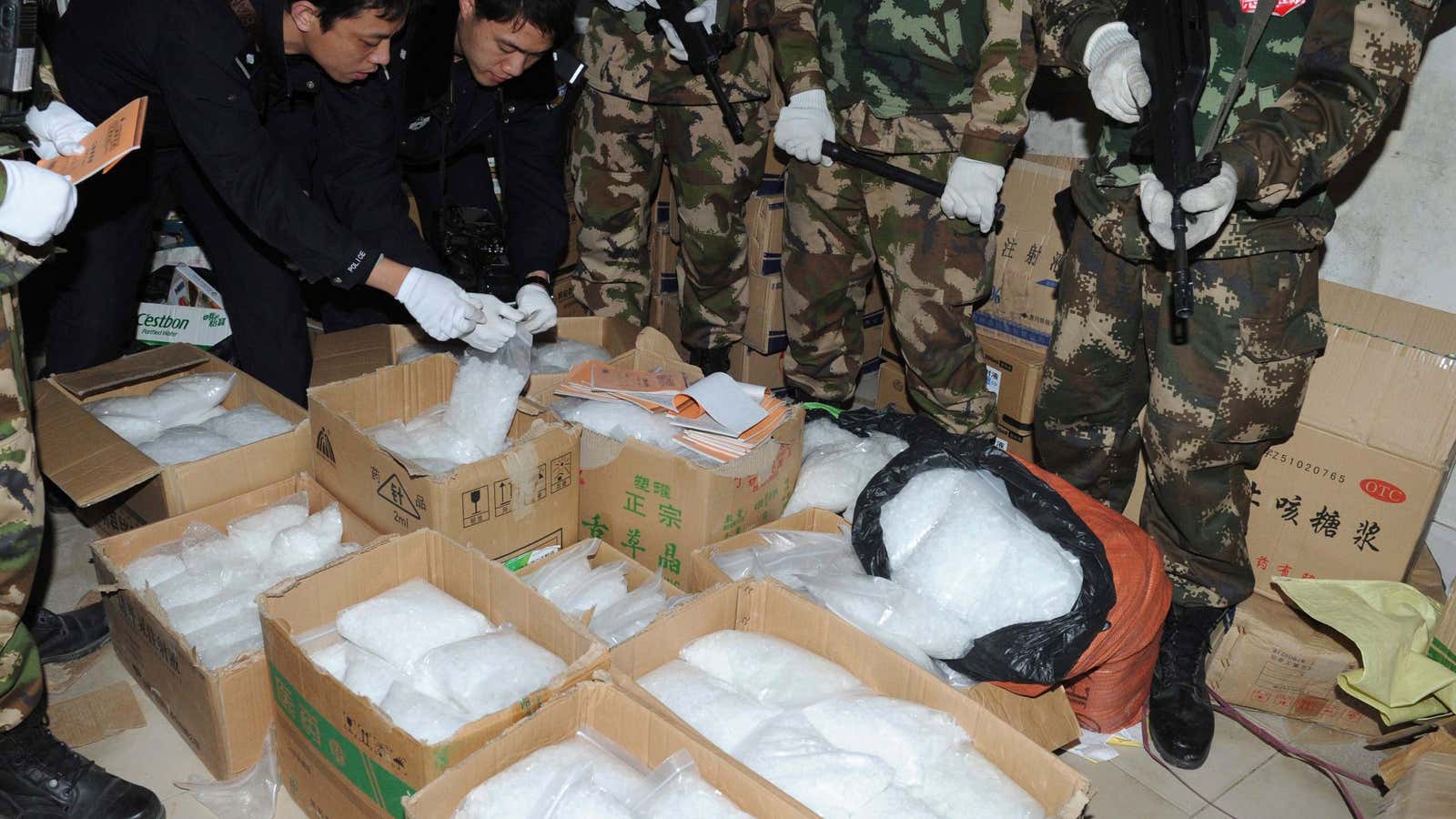As illegal drug use continues to grow in China, police there have turned to a new weapon to combat the problem—analyzing sewage water to find traces of substances like methamphetamine (meth) and ketamine.
While some countries such as Belgium and the Netherlands have been using the technique for research purposes, China is among the few that are actually setting policies based on the technique, said Daniel Burgard, a chemist at Washington-based University of Puget Sound, in a report published this week by Nature. Dozens of Chinese cities are now using the technique, known as wastewater-based epidemiology (WBE).
A team of researchers from Peking University put WBE to the test in 2015 to measure meth and ketamine traces in wastewater, two years after China launched national campaigns to crack down on drug use and manufacturing, according to Nature.
Last year, the team helped local police catch seven drug vendors (link in Chinese) in the southern city of Zhongshan, a hub of drug use and trafficking (link in Chinese), after it found drug traces in a local wastewater processing factory. In June, the university set up a lab in nearby Foshan, after researchers helped local enforcement officials catch some 50 drug users within a month, a 10-fold increase (link in Chinese) compared to before they began using the technique.
Li Xiqing, who leads the Peking University research team, expects to see more local governments adopting the technique across the country. He told Nature that Beijing and local governments would put at least 10 million yuan ($1.5 million) into WBE by the end of 2018, and that the figure could double in the following years. Some governments already set targets for arrests using the technique as early as 2019, Li added.
The expansion of the WBE technique comes as the number of drug seizures of substances like meth in China continue to rise, according to data from the United Nations Office on Drugs and Crime. China is also a major hub for meth and ecstasy manufacturing and distribution, according to the body’s 2017 report.
